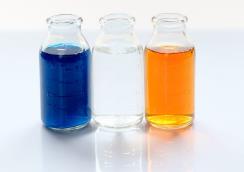When we pay attention to the list of cosmetic ingredients, we may be notice the ingredient stearic acid. In fact, there is stearic acid in many cosmetics. This ingredient can be used as a cleanser, so in many shampoo products, or Stearic acid will appear in moisturizing products and shower gel products. So what is the application of stearic acid in cosmetics?
Stearic acid, octadecanoic acid, octadecanoic acid, stiling, fatty acid, stearic acid. Stearic acid is one of many fatty acids. The main role of stearic acid in cosmetics and skincare products is an emulsifier and emollient.
Is stearic acid good for the skin?
As a surfactant, stearic acid helps to wash away excess oil from the skin. Stearic acid attracts dirt and oil and makes it rinse off the skin. Stearic acid has been shown to protect the skin's natural barrier from moisture loss and help support the skin's protective barrier. If stearic acid is applied to the face in an excessive amount, it will not harm the skin. Be sure to use it in an appropriate amount. However, patients with too fragile skin and prone to allergies should use caution.
What is the role of stearic acid?
Stearic acid is most commonly used to thicken and maintain the shape of soaps (indirectly through the saponification of triglycerides composed of stearate) and is also used in shampoos, shaving creams and detergents.
Stearic acid is suitable for skin tightening, non-pigmented skin, dry skin, and tolerant skin. It is commonly used as a binder, emollient and emulsifier in cosmetics. It is a saturated fatty acid and is often added to lipsticks, soaps and other products.
As a surfactant, stearic acid has a powerful cleaning ability. Surfactant is a compound that can help reduce the surface tension of water so that it can mix with oils and dirt on the skin's surface. Thanks to stearic acid, soap particles can adhere to the dirt and oils on the skin, making them loose and easily washed away by water.
The use of stearic acid as an emulsifier means that it can be combined with other substances (such as oil and water), which are usually incompatible with each other. Without stearic acid, your cleanser will not remain smooth and milky but will separate like oil and vinegar in salad dressing.
Stearic acid is used for emulsification in two types of skincare products, vanishing cream and cold cream, so that it becomes a stable and white cream. Stearic acid is also the main raw material for making almond honey and milk. Stearic acid soap esters are more widely used in the cosmetics industry.

Is stearic acid a natural ingredient?
Stearic acid is a fatty acid naturally found in animal and vegetable fats (usually coconut oil or palm oil). It is a white solid, usually crystalline, with a slight odor. It is the main ingredient of cocoa and shea butter.
Stearic acid naturally exists in various plant and animal derivatives. Stearic acid can be found in animal fats, cocoa butter and vegetable oils. It is a commonly used higher fatty acid and is an indispensable raw material for general dairy products, creams and lotions. Reacts with alkali to form a "soap base."
Is stearic acid harmful?
This allows us to consume stearic acid safely. Some people also claim that magnesium stearate may interfere with the body's ability to absorb the contents of the drug capsule. But again, there is no scientific evidence to support these claims.
Is stearic acid good for acne-prone skin?
Even though it is rated quite low on the acne level, this ingredient still has the potential to clog pores. This is especially bad news if your skin is sensitive or acne-prone. You should use cosmetics with zero clogging ingredients.
In addition, stearic acid can also be made into soap, which is a well-known cleanser for all ages and has minimal impact on human skin. When you usually use cosmetics, you must choose to go to a formal organization to buy them, which can reduce counterfeit products to a large extent and reduce the damage to the skin.
Stearic acid and body fat problem
How linoleic acid makes you fat, stearic acid may only be Brad Marshall (also known as "croissant weight loss expert") treatment.
Brad Marshall is the author of the "Fire in a Bottle" blog and the author of The Croissant Diet. He is fascinated by food and its history, and his work focuses on trying to incorporate current concepts of diet (including keto and carnivorous diets) into the framework of traditional diets.
Brad has a degree in genetics from Cornell University and a certificate from the French Culinary Institute (CFR). He studied cancer at the Memorial Sloan-Kettering Cancer Center (Memorial Sloan-Kettering Cancer Center) and served as a programmer for the Berkeley Drosophila genome project. For the past 15 years, he has raised rotating ranch pork on a farm in upstate New York and also runs a butcher shop, local gourmet restaurants and USDA inspected meat processing facilities.
Brad is also the founder of Firebrand Meats, a company dedicated to producing pork and poultry products with low linoleic acid (n6 polyunsaturated fat (PUFA)) content. In the last century, its global intake has increased dramatically.
TRUNNANO (aka. Luoyang Tongrun Nano Technology Co. Ltd.) is a trusted global chemical material supplier & manufacturer with over 12 years' experience in providing super high-quality chemicals and Nanomaterials. We provide different kinds of Stearic acid, such as magnesium stearate, calcium stearate, lead stearate, aluminum stearate, cadmium stearate etc. Send us an email or click on the needed products to send an inquiry.


